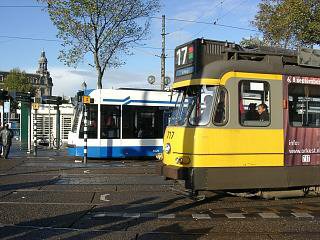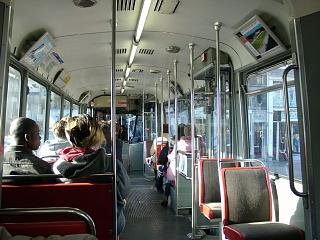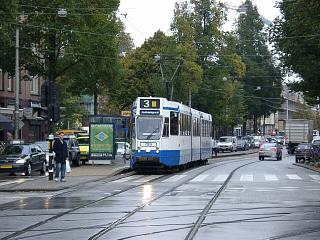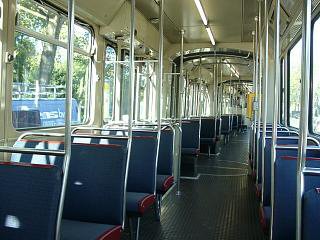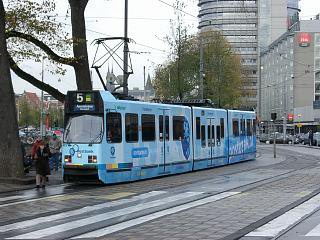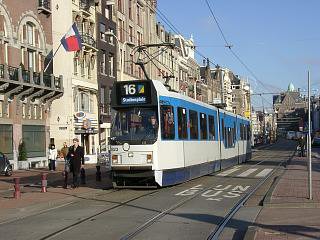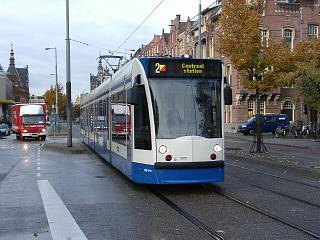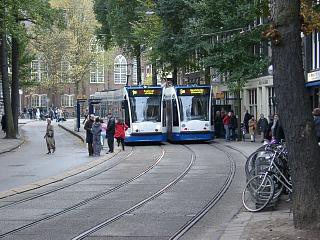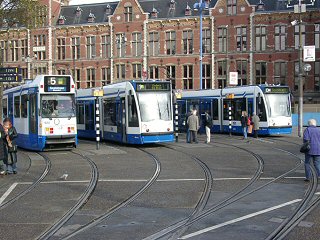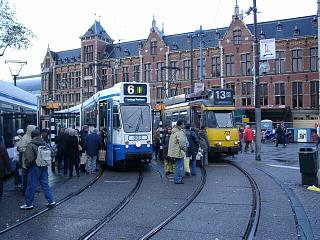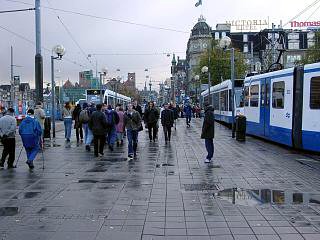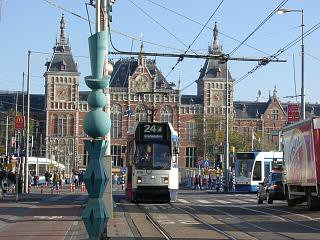budapest
other hungarian
close-up
lost rails
other countries
A visit to Amsterdam I.
Many thanks to Mr. Tim Boric for his help!
This was my third time in Amsterdam after 1990 and 1994, but the first time that I had tram photography in mind. Although I came to the capital of the Netherlands with my girlfriend mainly to have a nice and romantic long weekend, she kindly escorted me on my strolls along the rails. The result is about 250 pictures of the Amsterdam tram system. You'll only find a fragment of that here, but I tried to pick the most interesting ones.
Let's see the different tram types of urban transportation operator GVB (Gemeentelijk Vervoerbedrijf Amsterdam)! The 8-axle articulated car, seen here approaching Leidseplein was built by Werkspoor around 1967.
They're the oldest type still in use, and I guess their days are counted because of the growing numbers of low-floor trams.
The interior of such a "tubby (take a look at their front side!) tram". What you cannot see here is the sitting conductor at the last door. If I remember correctly, conductors were re-introduced in the early 1990's (or is it my fault that I don't remember them from my first visit?).
Linke-Hofmann-Busch company (LHB, now belongs to ALSTOM) of Salzgitter produced these boxy articulated cars at the end of the seventies and early eighties. Their axles seems to have a tendency of spinning over at the start, and they creak a lot, so travelling with them felt like home, on a Ganz CSMG2 articulated car in Budapest :-) Location: Bilderdijkstraat.
The interior of a "boxy articulated".
BN (Le Brugeoise-Nivelles) of Belgium shipped a batch of bidirectional, two-sided tramcars in 1989 for a proposed fast tram service number 5 to Amselveen (the council of Amstelveen opposed the construction of a reversing loop in their city, hence the bidirectional use). They have a low-floor middle part, which makes their internal passenger flow quite terrible, so you won't find sitting conductors on these vehicles.
There's also a unidiriectional version of that type in use, also built by BN with PCC-alike bogies and pedal-controll. Because of the 3-phase asynchronous traction system, these cars produce typical sirene-like sounds at starting and braking.
And yes, there's the Siemens Combino! Amsterdam has ordered more than 150 of them, out of which 4 are bidirectional (for route 5 of course). There's not much to say about these cars, they look pretty much like all the other Combinos around the world. Location: Paulus Potterstraat.
The interior of a Combino: there are three sections with wheels and two floating middle-pieces between them. In the second floating part you'll find the booth (!) of the conductor, but you cannot see that on this picture :)
A unidirectional and a bidirectional Combino in Nieuwezijds Voorburgwal.
Now let's start our stroll: in front of the Centraal Station, you'll find two reversing loops with 4-4 platforms each. for the 10 (or so...) services that have their terminus here.
The answer to the question "Which route starts from which platform?".
You can find a mixture of all tram types here!
What I didn't like: each four-platform loop has got only one exit track. Congestion is guaranteed in rush hours! Of course this might have been so due to the subway construction works going on in front of the railway station, I belive the track layout was different originally!
A BN car leaving Central Station for Dam Square.
Next page: trams on bridges and in pedestrian precints
Back to the top Back to the main page

